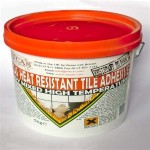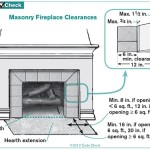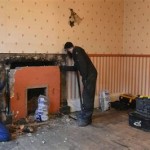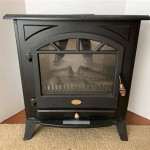How To Install A Floating Mantel On A Brick Fireplace
A floating mantel adds a touch of modern elegance to a traditional brick fireplace. Unlike traditional mantels that rest on corbels or legs, a floating mantel appears to hover against the brick, creating a clean and sophisticated aesthetic. Installing a floating mantel on a brick fireplace requires careful planning, precise measurements, and the proper tools to ensure a secure and aesthetically pleasing result. This article outlines the steps involved in a successful floating mantel installation.
Before commencing the installation, it is crucial to consider several factors. The weight of the mantel itself is a primary concern. Brick, while durable, can be susceptible to cracking or crumbling under concentrated pressure, especially if the brick or mortar is old or damaged. Therefore, selecting a mantel material and size appropriate for the structural integrity of the fireplace is paramount. A solid hardwood mantel will be significantly heavier than a hollow-core or engineered wood mantel. Secondly, understanding local building codes and regulations is essential. Some jurisdictions may have specific requirements regarding fireplace mantel installations, particularly concerning clearances from the firebox opening. Consult with local authorities or a qualified building inspector to ensure compliance.
Beyond structural considerations, the aesthetic aspects of the installation should be carefully planned. The mantel's dimensions relative to the fireplace's size and the overall room proportions will greatly influence the finished look. A mantel that is too small will appear insignificant, while one that is too large can overwhelm the space. Consider the mantel's depth (how far it projects from the wall) and height above the firebox opening. These dimensions will impact not only the visual balance but also the mantel's functionality as a display surface.
Planning and Preparation
The success of a floating mantel installation hinges on meticulous planning and preparation. This phase involves selecting the appropriate materials, gathering the necessary tools, and accurately measuring and marking the installation points.
Material Selection: The choice of mantel material is influenced by aesthetic preferences, budget constraints, and the fireplace's structural capacity. Solid wood mantels offer natural beauty and durability but are heavier and more expensive. Engineered wood or MDF (Medium-Density Fiberboard) mantels provide a more affordable and lightweight alternative, but they may lack the character and durability of solid wood. Ensure the chosen wood is properly sealed or finished to protect it from heat and moisture. In addition to the mantel itself, consider the hardware needed for mounting. Heavy-duty floating mantel brackets are specifically designed to securely attach mantels to brick walls. These brackets typically consist of steel rods or plates that are embedded into the mantel and anchored into the brickwork.
Tool Acquisition: The following tools are typically required for a floating mantel installation on brick: a measuring tape, a level (at least 4 feet long), a pencil or marker, a stud finder (to locate any framing behind the brick), a drill with masonry drill bits (of varying sizes), a hammer drill (depending on the hardness of the brick), a hammer, a chisel, safety glasses, dust mask, a vacuum cleaner, construction adhesive (optional, but recommended), and shims (optional, for fine-tuning the level).
Measurement and Marking: Accurate measurements are crucial for a level and visually appealing installation. Start by determining the desired height of the mantel above the firebox opening. Building codes typically specify minimum clearance requirements for combustible materials near a fireplace. These clearances are designed to prevent fire hazards. Measure from the top of the firebox opening upwards to the desired mantel height and mark this point on the brick wall. Use a level to draw a horizontal line across the width of the fireplace, indicating the top edge of the mantel. This line will serve as a reference for positioning the mounting brackets.
Next, determine the placement of the mounting brackets within the mantel. The number and spacing of the brackets will depend on the mantel's length, weight, and the bracket manufacturer's recommendations. Mark the bracket locations on the back of the mantel, ensuring they are evenly spaced and aligned. Transfer these marks to the brick wall, using the horizontal reference line as a guide. Double-check all measurements and markings before proceeding to the next step.
Installing the Mounting Brackets
The installation of the mounting brackets is the most critical step in securing the floating mantel. This process involves drilling into the brick, anchoring the brackets, and ensuring they are level and properly aligned.
Drilling into the Brick: Using a hammer drill and a masonry drill bit that matches the diameter of the bracket's anchor bolts, drill pilot holes into the brick at the marked locations. Start with a smaller drill bit and gradually increase the size to prevent cracking or chipping the brick. Drill deep enough to accommodate the full length of the anchor bolts, as specified by the bracket manufacturer. Exercise caution when drilling near mortar joints, as mortar is generally weaker than brick and may crumble easily. If necessary, adjust the bracket placement slightly to avoid drilling directly into a mortar joint. Wear safety glasses and a dust mask to protect yourself from flying debris.
Anchoring the Brackets: Once the pilot holes are drilled, insert the appropriate anchors into the holes. The type of anchor used will depend on the type of brick and the weight of the mantel. Common anchor types include sleeve anchors, wedge anchors, and expansion bolts. Follow the manufacturer's instructions for installing the chosen anchors. Typically, this involves inserting the anchor into the hole and tightening a nut or bolt to expand the anchor within the brick, creating a secure hold. Ensure the anchors are flush with the brick surface. For added security and stability, consider applying a construction adhesive around the anchor before inserting it into the hole. This will help to fill any gaps and create a stronger bond between the anchor and the brick.
Ensuring Level and Alignment: After the anchors are installed, attach the mounting brackets to the brick wall, using the provided hardware. Use a level to ensure the brackets are perfectly horizontal. If necessary, use shims to make minor adjustments and achieve a level surface. Proper alignment of the brackets is crucial for a seamless mantel installation. The brackets should be parallel to each other and spaced according to the markings on the back of the mantel. Double-check the level and alignment of each bracket before proceeding.
Attaching the Mantel
With the mounting brackets securely installed, the final step is to attach the mantel to the brackets. This process requires careful lifting, precise alignment, and a secure fastening method.
Preparing the Mantel: Before mounting the mantel, ensure that the bracket receiving holes in the back of the mantel line up with the installed brackets on the wall. If necessary, adjust the position of the wall brackets slightly. Apply a bead of construction adhesive to the top surfaces of the mounting brackets to provide additional bonding strength. This step is optional but highly recommended for added stability.
Lifting and Aligning the Mantel: Carefully lift the mantel and align it with the mounting brackets. This may require assistance, especially for heavier mantels. Slide the mantel onto the brackets, ensuring that the steel rods or plates are fully inserted into the pre-drilled holes in the back of the mantel. Take your time and avoid forcing the mantel onto the brackets, as this could damage the brick or the mantel itself.
Securing the Mantel: Once the mantel is properly aligned and seated on the brackets, secure it in place using screws or bolts, as specified by the bracket manufacturer. These fasteners will prevent the mantel from shifting or sliding off the brackets. Ensure the fasteners are tightened securely but not overtightened, as this could damage the mantel or the brick. After securing the mantel, inspect the installation for any gaps or imperfections. Use wood filler or caulk to fill any gaps between the mantel and the brick wall, creating a seamless and professional finish. Clean the area around the fireplace to remove any dust or debris. Allow the construction adhesive to cure completely before placing any objects on the mantel.
Regular maintenance is essential to preserve the beauty and integrity of the floating mantel. Dust the mantel regularly with a soft cloth to prevent the buildup of dirt and grime. Avoid placing heavy objects on the mantel that could strain the mounting brackets or damage the brickwork. Inspect the mantel and the mounting brackets periodically for any signs of damage or loosening. Tighten any loose fasteners and repair any cracks or chips promptly to prevent further deterioration. With proper care and maintenance, a floating mantel can enhance the aesthetic appeal of a brick fireplace for many years to come.

How To Install A Floating Mantle The Easy Way In Just One Afternoon

How To Install A Floating Mantle The Easy Way In Just One Afternoon

How To Install A Floating Mantle The Easy Way In Just One Afternoon

How To Install A Mantel On Brick Fireplace 1905 Farmhouse

How To Install A Floating Mantle The Easy Way In Just One Afternoon

How To Install A Mantel On Brick Fireplace 1905 Farmhouse

How To Install A Floating Mantle The Easy Way In Just One Afternoon

How To Install A Mantel On Brick Fireplace 1905 Farmhouse

How To Install A Floating Mantle The Easy Way In Just One Afternoon

How To Install A Mantel On Brick Fireplace 1905 Farmhouse
Related Posts








